#i filmed it in case i want to try decoding it later
Explore tagged Tumblr posts
Text






visit to an art gallery i haven't been to before! the owl lamps and the broken glass room are part of a pride-related exhibition. the owl lamps were used in gay bars in amsterdam from about 1920-60 to warn patrons, they lit up when cops and strangers entered the bar
#for this art piece the owls lit up one after another before flashing in a morse code message#i don't know morse on top of my head but i Suspect it said '#'fly doves fly' as that is the name of the exhibition#i filmed it in case i want to try decoding it later#i love the beanbag horse btw. look at him. a Mood
33 notes
·
View notes
Photo
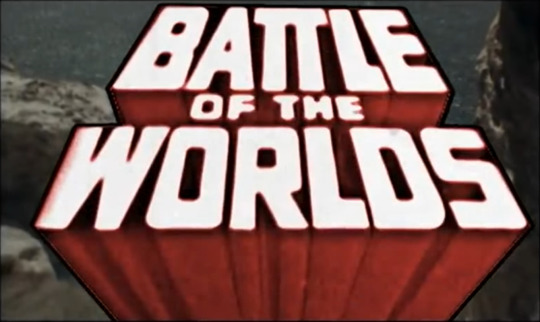
Battle of the Worlds
Several times on this blog I've featured movies that have more than one title. In almost every case, the new titles were better than the original one, and this is not an exception. Battle of the Worlds is fairly bland, but it tells you that you're going to be seeing a movie about some kind of space-based conflict, without giving away the details. The Italian title was Il Pianeta degli Uomini Spenti, which is a fucking spoiler.
An earlier draft of this review contained a couple of jokes about the classically phallic 60's spacecraft in the movie, but I went back and took those out. Bezos has really set a whole new standard for Giant Dong Rockets and I can no longer accept anything less.
A group of astronomers have just discovered a rogue planet, which they have dubbed the Outsider, is entering our solar system. Everybody is worried about it hitting Earth except for nasty old misanthrope Professor Benson, who says it'll be a near miss. As it turns out, nobody's exactly right – the Outsider doesn't hit us, but it doesn't just pass by, either. Instead, it settles into orbit, and when humanity attempts to explore it, it responds by sending out squadrons of flying saucers to blow our rockets out of its sky! After one of these crashes on Earth, Benson is able to learn how to deactivate the Outsider’s defences and land on it, where humanity can finally confront its inhabitants... or can we?
Well, if you speak Italian, you already know the answer, because this is The Planet of Extinguished Men. The aliens are all long dead and their spaceship has been following its programming for millions of years without them, including the part telling it to destroy the Earth. Bummer.
I actually have quite a bit to say about this movie. It centres around some interesting musings about human emotion and curiosity, though it never comes to any solid conclusions. As a movie, unfortunately, it's not very well-made. This is a story in which the world as we know it nearly comes to an end more than once, and yet very little seems to happen in it.
The opening sequence is terribly clumsy and does very little to place you within this world. We start off with two characters kissing and being excited about starting a new life together, but we have no idea at this point who they are or why they want to leave this place. When the Outsider is discovered, the scientists beat around the bush and try to keep it a secret, even from the audience. Only Benson is willing to be upfront about it. This does establish him as a realist while making his colleagues seem spineless, which is what the movie wants, but it's also terribly frustrating for the viewer.

Later there's a sequence in which a craft attempting to land on Mars is nearly destroyed by the gravity of the Outsider, and some quick thinking saves the astronauts' lives, but this is directed like the battle sequences in Invasion of the Neptune Men. We have no idea where any of these craft or planets are in relation to one another, and have to rely on characters sitting at desks to tell us what's happening. Even worse, we never see the chaos the looming end of the world wreaks on society. Astronauts who have recently returned to Earth note that they've heard there have been suicides and riots as people fear the Outsider will impact our planet, but we never see any of this.
The movie does a little better later, when the Outsider's close approach causes disastrous tidal forces... these are represented by black and white footage of floods and volcanic eruptions tinted red to try to make it match the rest of the colour film. As always, this fails, but at least they tried. Other special effects are equally pathetic. There are the inevitable plastic model kit rockets with their flame exhaust that rises in what's supposed to be a zero-gravity vacuum. The 'flying saucers' the Outsider launches to defend itself look like nothing so much as giant fried eggs.

The Outsider itself is particularly sad to look at. They have a model they use for it in a few shots, but this is about on a par with the original MST3K spaghetti ball. In other shots, the Outsider is represented by a photograph of the Moon. Absolutely no attempt is made to disguise it, and so of course the effect is a dismal failure because everybody knows what the goddamn Moon looks like. They couldn't even, I don't know, turn it upside-down or something?
On the other hand, the inside of the Outsider is actually pretty cool. The sets aren't exactly believable, but you can see what they were going for. Upon entering the caverns, the explorers find themselves in a series of tunnels full of strange red tubes and textures that look more organic than geological. Entering the Outsider is like wandering around within a living organism. My favourite part of this is that absolutely nothing we see here is comprehensible. Professor Benson, the genius, claims to be able to figure out what's going on, but his declarations seem arbitrary and nothing we're looking at makes visual sense. Even the aliens don't look like anything in particular. Were it not for Benson, we would not recognize them as living (or dead) creatures.

Like First Spaceship on Venus, Battle of the Worlds is much more interested in its ideas than in anything else, including what is supposedly its plot. The characters are important mostly as the embodiment of those ideas, rather than as people in themselves, and the ideas the movie wants to study are about logic and emotion and how they affect human priorities.
The character of Dr. Fred Steele finds himself facing the potential end of the world, and decides that the most important thing to him in this situation is the love between him and his fiancee, Eve Barnett. Professor Benson, on the other hand, thinks the most important thing is to understand the threat they're facing. Partly this is so that humanity can save itself from destruction, but knowledge for its own sake is also important. In between these two men is Eve herself, who thinks love and science are both important and tries to find some middle ground between the two. This is difficult for her, because Benson wants her to stay at the observatory and assist him, while Fred wants her to leave with him so they can get married. When Eve tries to convince Fred to stay with her, both men see this as her having chosen Benson, and it poisons the relationships between all three parties. Only with Benson dead are Eve and Fred able to strike a balance again.
But the movie doesn't want us to think that there is no middle ground. The movie's other romantic couple are the two scientists from the Mars Base, Bob and Cathy. They got married because they were both lonely and a psychological evaluation suggested that they had compatible personalities. As the story progresses, however, they find that they have indeed fallen in love and want a future together that would include things like children – but this is ultimately denied to them, as Cathy is crushed by falling debris while exploring the Outsider.
Benson dies when insists on staying aboard the Outsider to try to decode its computers despite the fact that the military is about to destroy the entire object. As the others escape, Fred intones the movie's beauty killed the beast line: “poor Benson, if they opened his chest they'd find a formula where his heart should be.” And yet Benson died happy – as the Outsider explodes he is triumphant in his ability to understand its secrets, and laughing at the foolishness and cowardice of his fellow man. It is the survivors who are miserable, mourning the loss of Benson himself as well as of Cathy, whose death was entirely meaningless.
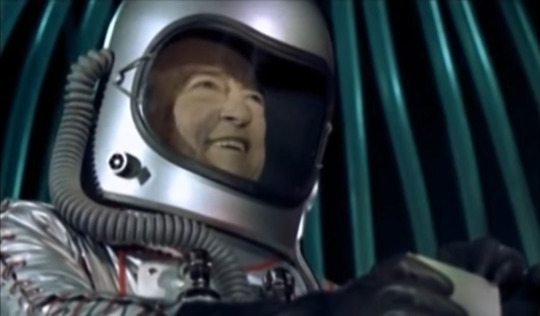
I'm not sure what the movie is trying to tell us about these different approaches to life. It seems to present them as ultimately incompatible, that attempts to give logic and emotion equal weight can only end in tears. Only Benson, who was unswerving in his devotion to science, is ultimately satisfied. Perhaps the take-home message is that whatever your principles are, happiness lies in following them to their conclusion.
There's a second message, too, in different approaches to science itself. Modern physicists will often describe themselves as either theoretical or experimental... the two fields do compliment each other, but they often take place in different rooms, and one will be seen as leading the way for the other. The search for the Higgs Boson was theory-led: people were pretty sure it existed, they just had to find it. A great deal of astrophysics, however, is result-led: what we see tells us that there are things going on, like dark matter and dark energy, that we know nothing about, and the theorists must do their best to figure it out.
For most of his life, Benson has been a theorist. He sits in his greenhouse chalking on the floors, spinning theories out of other people's results or out of pure mathematics. Until the arrival of the Outsider, he had no interest in going out and exploring or experimenting. But it quickly becomes clear to him that he cannot understand the Outsider through pure theory, as his calculations cannot account for the decisions of its makers. In order to know it, he must see it for himself, so he grandly announces his intention to leave his 'den'. Nobody ever asks him if it was worth it, but his maniacal smile at the moment of his death suggests that it was.
Battle of the Worlds had potential to be a really interesting movie, but ultimate the way its shot and edited make it mainly a very dull one. Like its own characters, it fails to find the balance it needed.
17 notes
·
View notes
Text
Day 3 - Reflections on emotional maturity
"Wielding sensible arguments can at points be as effective as telling a person with vertigo that the balcony wont collapse or a person with depression that there are perfectly good grounds to be cheerful" A lot of our mind is not amenable to hard-headed logic, not when emotions are involved
Yet, truly facing and understanding our emotions and then still be able to act with some rationality and logic is a testament to emotional maturity. There is more to love, forgiveness, trust than what we think we know.
I am sorry for my hurtful words, said in times of emotional turmoil. I regret my texts and posts, impulsive and raging. I've spent a lot of time reflecting on my actions, your thoughts and feelings and ultimately your decision. The turmoil I initially faced was truly a mixture of shock from how sudden things changed as well as the immense void your disappearance has caused. Given time, I have calmed down and could examine myself deeper on many levels.
I learned that I can be loved and that I can have wants and needs. I learned that my careless acts can hurt even when I don't recognise it at that point of time.
I know my mistakes and can see its damages. I triggered this whole chain of events, rocking what was a seemingly stable relationship. I see that we are flawed, but not un-deserving of love. Our innate reactions and nature is built upon by our past, regardless whether we consciously know it or not. Some traumas and hurt that forms our current insecurities are born from history we may not even remember. Though this doesn't discount our current wrongs, it does help to allow us to understand people better.
I do know, that I can and should listen to what I want and love, not only to that of other's demands or requests. I can be selfish in love and loving. I can earnestly seek forgiveness and then put in action to repent and atone for the wrongs I've made. Yet forgiveness and moving on from the hurt I've caused, is not mine to give or take. It is for me to earn and for you to heal from. I can only do what I believe is best, in terms of my love for you and love for myself. I do feel, we both have a lot to learn in terms of emotional maturity and have ways to go to truly understand what it means to love, to hurt, to trust and to forgive.
=====
https://www.youtube.com/watch?v=YGV5o6UHjxM - Stay in or Leave a Relationship We expect to be deeply happy in love, and, therefore, spend a good deal of time wondering whether our relationships are essentially normal in their sexual and psychological frustrations or are beset by unusually pathological patterns which will impel us to get out as soon as we can. What films or novels we've been exposed to, the state of our friend's relationships, the degree of noise surrounding new sexually driven dating aps, not to mention how much sleep we've had, can all play humbling large roles in influencing us one way or another. How much of our unhappiness can be tightly attributed to this particular partner, and how much might it, as we would risk discovering five years later and multiple upheavals later, turn out to be simply and inherent feature of any attempt to live in close proximity to another human? Try to have another conversation with your partner in which you don't accuse them of mendacity, and instead simply explain, quite calmly, how you actually felt and how sad you are at quite a few things Consider the annoying traits in all previous partners we've had and people we've known, that our current partners happen to not have, what do we manage not to fight about?
https://www.youtube.com/watch?v=oLq1ktogxn4 - What infidelity means There are, of course, many cases where infidelity means exactly what Romanticism takes it to mean: contempt for one’s relationship. But in a great many other cases, it may mean something really rather different: a passing, surface desire for erotic excitement that coexists with an ongoing, sincere commitment to one’s life-partner. The best way to recover after an infidelity may therefore be to ignore what Romanticism tells us that infidelity has to mean, and to consult instead a more reliable source of information: what we ourselves took infidelity to mean the last time the idea crossed through our minds or our lives. It is on this basis that we may – with considerable pain of course – come one day to be able to forgive and even in a way understand and accept the apologies of a repentant partner. It is on the basis of subjective experience of unfaithful thoughts that we may redemptively enrich, complicate and soften what happens when we end up as their victims.
https://www.youtube.com/watch?v=WRaaqN2Atxw - Why We Go Cold On Our Partners Going cold is, in this story, simply the unavoidable consequence of familiarity. he loss of interest isn’t either natural or inevitable. The boredom is something at once more complicated and more active. It exists because we feel hurt by, angry with, or scared of our partner and because we haven’t found a cathartic way to tell ourselves or them about it. Tuning out isn’t inevitable, it’s a symptom of disavowed emotional distress. It’s a way of coping. We’re internally numbed – not just a touch bored. To learn to cope, we need a prominent mutual awareness and forgiveness of this dynamic of sensitivity and distress – and a commitment to decode it when disengagement and indifference descend. When we've gone cold, we may not truly have lost interest in our partners, we might just need an opportunity to imagine that we are quietly really rather hurt and furious with them and we should access to a safe forum in which our tender but critical feelings can be aired, purged and understood without risk of humiliation
https://www.youtube.com/watch?v=rgQvqi6aYD8 - The Secret of Successful Relationships: Rupture and Repair Repair refers to the work needed for two people to regain each other's trust and restore themselves in the others mind as someone who is essentially decent and sympathetic and can be a good enough interpreter of their needs Repair isn't just one capacity among others, it is arguably the central determinant of one's mastery of emotional maturity Good repair relies on at least 4 separate skills: The ability to apologise The ability to forgive - To do so requires us to extend imaginative sympathy for why good people can end up doing some pretty bad things, not because they are evil but because they are in their varied ways tired or sad, worried or weak. It lends us energy to look around for the most generous reasons why fundamentally decent people can at points behave less than optimally. We cling to rupture because it confirms a story which, though deeply sad at one level, also feels very safe: that big emotional commitments are invariably too risky, that others can't be trusted, that hope is an illusion The ability to teach - They give their listener time and know about defensiveness and as a fallback, accept that they may have to respect two different realities. They can be in the end bear to accept that they will always be a bit misunderstood even by someone who loves them very much The ability to learn - They have a lively and non-humiliating sense of how much they still have to take on board. It isn't a surprise or a cause for alarm that someone might level a criticism at them. Its merely a sign that a kindly soul is invested enough in their development to notice areas of immaturity, and in the safety of a relationship, to offer them something almost no one otherwise even bothers with: feedback.
https://www.youtube.com/watch?v=Ci-zID4EAPU - How to deal with trust issues 1. Ask yourself how your reactions line up with reality - The thoughts we may have may not always be an honest perception of what is happening 2. Learn to be non defensive when you communicate - Chances are, people take the time to talk to you because they care about you and not because they want to hurt you 3. Let people know what you need and be direct about it - In order to build trust, you have to be open and honest. People often have trust issues because they are afraid of getting hurt. Trust issues are developed when too much focus is concentrated on the pain, but not enough on overcoming the pain. 4. Give people a chance to show you who they are - Give people time to show you their true colours, and you may be surprised that you can go through challenges well together 5. Practice open-ended conversations that allow disagreements 6. Confront your fears and don't allow them to hold control over you - Remember, you have the power to work through your struggles openly and honestly. You have it in you to connect and build trust with others
https://www.youtube.com/watch?v=d-K5btaxEFY - How to forgive It can be so hard to forgive because – so often – we simply are in the right and the scale of the folly, thoughtlessness and meanness of others seems utterly beyond our own measure. But there are 2 inviolable ideas which should nevertheless, in the face of the grossest behaviour, be kept in mind to increase our changes of being able to forgive: 1. We must remember how the other person got there, to this place of idiocy and cruelty - Every irritating fault in another person has a long history behind it. They became like this because of flaws in their development, which they did not choose for themselves. To forgive is to understand the origins of evil and cruelty 2. There are difficult things about you too - Not in any area remotely connected to the sort of lapses that destroy your faith in humanity. But in some areas, quiet areas that you forget about as soon as you've travelled through them, you too are a deeply imperfect and questionable individual. Gently, you have - in your own way - betrayed. Nicely, you have been a coward. Modestly, you have forgotten your privileges'. Unthinkingly, you have added salt to the wounds of others. We must forgive because - not right now, not over this, but one day, over something - we need to be forgiven too.
https://www.youtube.com/watch?v=pVeq-0dIqpk - How to build (and rebuild) trust There is 3 facets of trust: Authenticity in actions, Rigor in logic and communicating that logic, True empathy towards the other
https://www.youtube.com/watch?v=NhyfBi-Ad4c - Loving and Being Loved We start knowing only about being loved. It comes to seem, very wrongly, like the norm. Parent and child may both love, but each party is on a very different end of the axis, unbeknownst to the child This is why adulthood, when we first say we long for love, what we predominantly mean is that we want to be loved as we are once loved by a parent In a secret part of our minds, we picture someone who will understand our needs, bring us what we want, to be immensely patient and sympathetic to us, act selflessly, and make it all better we need to move firmly out of the child and into the parental position of love To be adults in love, we have to learn, perhaps for the very first time, to do something truly remarkable, for a time at least, to put someone else ahead of us.
=====
I know, making this decision has not been easy on you. You struggled internally alone for 5 weeks before taking the brave step to pursue what you believed was right now. I can only imagine the turmoil you've been put through. I cannot and will not blame you for loving yourself more.
When I look at myself and what I've gone through in the past weeks, I do wonder how you are coping along as well. I do believe in what we had, which meant that these days were probably not as easy on you too as you make it seem. I never imagined that my actions were seen as infidelity to you and that while we know it was not ill-intentioned, the feelings you've felt and the hurt I've caused you are valid.
I hope the above few points and videos can eventually help you to heal and move on, to feel ok enough to love another again some day. I am always here to openly talk about us, about our feelings and about what we each want now or in the future for ourselves. In the past 2.5 years, have you done and said anything to anyone or just innately felt that you would feel afraid to tell me of? Has there ever been any breach of trust on your end or guilt, before my current mistake that made you feel betrayed? I am open, with no judgement or shame, to talk about these, if you are ever willing. I have done you wrong, and I truly have repented. I will never ever breach trust like that ever again, not even at the cost of feeling uncomfortable in sharing how I feel.
I too will love myself, doing my utmost best to pursue things I want and love because they make me happy. It is ok to be selfish in love, something I have learned from you that I am grateful for. Take care, I am only 1 text away
Love, Ben
1 note
·
View note
Text
From Russia With Love - #24WeeksofBond

24 Weeks of Bond continues this week with “From Russia With Love”. Sean Connery has come back for a second installment in the Bond franchise, and unlike most sequels, it does not disappoint. Isn’t it funny to think about now? How Bond was once just a movie with a sequel? In fact, I would say in this case the sequel far exceeds the original...but I haven’t seen “Dr.No” in quite sometime, so it will be interesting to see how that opinion changes later on. But let’s get to the subject at hand.
This film, in a nutshell, is sort of a cat and mouse game. Except that the mouse is James Bond...and just when the cat thinks he’s nailed down his prey, the mouse opens up a can of tear gas in the cats face.
This is the first time we are introduced to the man behind the evil intelligence operation known as SPECTRE, an acronym for Special Executive for Counter-intelligence, Terrorism, Revenge and Extortion. (thanks wikipedia). In the previous film, Dr.No, we are simply told about SPECTRE by Dr. No himself, but here, we are fully immersed in the organization. Blofeld, the head and mastermind behind the organization, has hired two figures to plan out and execute a scheme to essentially, kill two birds with one stone.
They want a Lektor Cryptography decoder to extort the soviets with, and they want Bond dead for killing Dr.No...(spoiler, sorry...but it shouldn’t surprise you). So we have a master strategist creating the plan - that’s established right away because dude won a chess game...and Colonel Klebb carrying it out. Klebb is a former soviet counter intelligence officer working for one terrorist group who is now secretly working for a bigger terrorist group in SPECTRE.
Klebb hires a beautiful soviet cryptologist to lure Bond over to Istanbul where the Lektor is. Klebb also hires a big ox named Grant to secretly keep Bond alive until he has possession of the Lektor and then to kill him, and bring the Lektor to SPECTRE.

So Bond is sent on a mission by MI6 knowing full well that this is a trap, but like the master strategist predicted, the opportunity to obtain a Lektor is just too enticing to pass up. So the mission begins with Bond looking over his shoulder and trying to anticipate every move and countermove to somehow escape back to England with the Lektor, and hopefully Tanya Romanova, the girl hired to entice him to the Lektor. Of course throughout this mission, they end up actually falling for each other.
Whew...when I write it all out, it seems rather convoluted. But the good thing about this film, is that it doesn’t feel convoluted, it’s rather easy to follow and allows you as the viewer to put the puzzle pieces in place as you are watching it. While “From Russia With Love” isn’t very abundant on the action, it delivers with its methodical plot and story telling. That’s NOT to say that there is no action...we have a fight between two gypsies, a shoot out at the gypsy coral, a fight between Bond and a flying helicopter with grenades, a boat chase, and of course the scene that I always think about when I think of this movie...a nasty, brutal train car fight.
Bond and Grant (the hired hitman to kill Bond and retrieve the Lektor) eventually come to blows in one of my favorite fight scenes in the whole catalog. With no intense music behind it, just the sound of a train, Bond and Grant brutally beat the holy shit out of each other in a dark train car, shoving each other into the walls, applying full nelsons, breaking glass, and just straight up fist-a-cuffs that make you feel every hit. Theres just so much beauty in simplicity sometimes.
Speaking of simplicity, we are first introduced to the iconic character Q, played by the beloved Desmond Llewelyn (who would go on the play Q for the next 36 YEARS). He gives Bond a nifty briefcase with a bunch of defense mechanisms in it. I’m sure people went nuts over it, because the following movie you start getting things like ejectable car seats. But the briefcase really comes in handy.
Everything about “From Russia With Love” feels like it has a purpose. There is not one scene that has any sort of wasted dialogue. The only wasted scene, for me, is the pre-title sequence. It opens up with an unusually timid looking Bond who is seemingly chasing the man trying to kill him (Grant) in a hedge maze. Grant finally catches bond and strangles him to death...only for the lights to come up on this weird training session where Grant was being timed, and then they proceed to take the Sean Connery mask off to reveal it just being a guy.

This is amusing to think about, someone hired someone to create a mask that looks exactly like Bond to use for Bond killing training sessions. It’s like, why bother with the mask? Anyways, I get it...they wanted us to believe that this Grant guy just killed Bond. But it just seems so ridiculous.
From Russia With Love is a Bond movie I highly recommend and is regarded as one of the better Bond movies by numerous experts. I would have to agree. It also reminded me just how damn great Connery was. Everything he does is just so smooth. Theres a scene where Kerim Bey (Bond’s contact in Istanbul) tosses him something, and Bond just catches it in stride and carries on. It was a moment so small and insignificant to the story, but I saw that and went, “man, that’s why Connery is so awesome”. Give this movie a watch to remind yourself of just why Connery is regarded as one of the best Bonds ever.
That’s it for this week...Let me know what you thought, and I’ll paste it on at the end!
Reviews from Friends:
Jeremy Bent
Train fight is maybe my all time favorite Bond fight.
My Mom
I enjoyed it. But I liked the other one more. I always thought Bond was kind of futuristic but this movie had a shoot out at the OK Corral feel. It was a surprise to see a young blonde Robert Shaw. I hate to admit it, but I think I liked roger Moore’s portrayal more than Connery ‘s.
24 Weeks of Bond will be back next Monday with -
Tomorrow Never Dies
1 note
·
View note
Photo










Looking Closer at How The Abominable Bride Foreshadowed and Can Be Used to Chronologically Decode Series 4:
In the last third of TAB –– after Sherlock mulls over being haunted by Moriarty’s ghost in the wake of Sir Eustace’s murder –– Sherlock deduces the method by which the bride appeared to him and John the night at the Carmichael manor, calling it a “trick” that involves the use of glass to project an image. The only mistake of the legion of brides, however, was breaking the glass when they removed it.
In the third and last episode of series 4, TFP –– after John imagines Mycroft mulling over being haunted by Eurus’s presence –– Eurus reveals the method by which she tricked Sherlock into not noticing the panel of glass missing in front of Eurus’s cell, it being a simple but clever “trick” that involves filling the room with contextual clues that would lead to Sherlock making the assumption that the glass was still there. The “trick” and the panel, as Sherlock calls it, is “transparent” –– there’s nothing to break anymore. As Eurus describes, there is no “trick”... there’s just her.
[Continue below the cut for more ➤]
See also: The Unfinished Act of Series 4, 10 Revealing Things From The Six Thatchers That Haunt You Late At Night, 10 Revealing Things From The Lying Detective That Haunt You Late At Night, and 10 Revealing Things From The Final Problem That Haunt You Late At Night.
Bonus: The external author vs. John the author:


The legion of brides, on a surface level, is about the case of Emelia Ricoletti and how they helped her accomplish her goal. On the level of Sherlock’s internal conflict, Mrs. Ricoletti and the brides also represent himself and Reichenbach, Moriarty and him possibly surviving, and Mary working with Moriarty, her “death”, and her ghost to come in series 4. And on a meta-textual level, the brides are a mirror for us: a group largely made up of women who are right about the show’s goals and being the first true retelling and reveal of the Sherlock Holmes canon and character –– except we figured it out, and thus accidentally broke the glass before the reveal. “I love a good acronym. All the best secret societies have them,” Mark Gatiss says with a pen in his hand, and “Is ‘cup of tea’... code?” is a line spoken in TLD. When there is no glass left to break in TFP, the significance isn’t just about that, however, but about John desperately trying (and almost failing) to wrap up his imagined narrative of the true events of series 4 into a cohesive whole.
Series 4 is a filtered narrative through John’s point of view, which ironically, means that we’re getting an unfiltered view of John’s own beliefs, perceptions, internal biases, and self loathing, similar to Sherlock’s dream, because as the author, he is present in every detail and characterization of the narrative covering up what’s really going on –– and that’s why the glass panel is missing. Series 4 instead gives people contextual clues like the glass sign and filtered mic so that general audiences will largely assume the narrative is real –– all the cast members are still there, there are still cases, plot points and self-contained narratives in each episode, and life goes on in Baker Street when John writes a happy ending –– and of course, external of the show, the twist is still being kept secret –– but John can’t help but let things slip out. He’s largely successful in this throughout TST and TLD, but after the gunshot at the end of TLD, the narrative begins to free fall into nonsensical backstories, internalized pop culture and film references, and subconscious horror. John was not able to escape his Samarra. “Disguise is a self-portrait.” There is no glass anymore, no mirror. The mirror is the story itself. John is the show. “Transparent.”
John’s disguise for his own self-loathing is most present in TFP as Eurus; a depraved, bisexual villain who’s “enslaved” anyone who’s ever been in the same unprotected room as her for too long, and a manipulative and sociopathic murderer who killed Sherlock’s childhood friend. John is trying to figure out why Sherlock is the way he is, and so invents a backstory for him where Redbeard as a child is John’s own self-insert, killed by John’s own dark mirror. John is deeply afraid he’s a sexual predator and that he’s going to hurt Sherlock, and potentially break him this time. The details of Eurus’s intellect and plan don’t make any sense because she is one of John’s own internal monsters (Culverton Smith being another). When Sherlock’s imagined John in TAB points out “But Holmes, we saw her!” about the bride on the night of Sir Eustace’s murder, a correlation for John being shot in series 4, Sherlock explains “Yes, we did,” but that it was just a projection through a mirror, one that was broken afterwards. John and Sherlock run into Eurus in every episode of series 4 –– as the redhead on the bus, as Faith Smith, as the therapist, and finally as Sherlock’s long lost sister (which is actually more true of Mary and Moriarty –– John reusing the same idea as an author and applying it to the wrong circumstance) –– but Eurus was never there. Eurus is the missing glass, Eurus is John’s unfiltered subconscious he can pour his fears into, Eurus is John’s imagined plot device, and Eurus is the invention at the heart of everything that happens in series 4 –– a lie, a cover up, a projection, and the mirror.
Eurus, or John as the Author, offers to explain what happened to Redbeard if Sherlock approaches the glass panel, or Eurus herself, the actual mirror. Later in the episode, John holds up the bones of Redbeard at the bottom of the well, a childhood trauma disguised as an invented memory, as Eurus is monologuing her backstory. When Sherlock is dreaming of the present in TAB where he digs up Emelia Ricoletti’s bones, he asks, “What happened to the other one?” Sherlock is talking about several things here –– himself in TRF, Moriarty, Mary, Mrs. Ricoletti –– but also Redbeard itself. “Mycroft [Mark Gatiss] has been lying to you. To both of us,” John claims. Redbeard in TFP is just another mirror –– and the real one is still out there. In TAB when John asks, “... what made you like this?” Sherlock says, “Oh, Watson. Nothing made me. I made me,” before he hears a dog howling in the distance and whispers, “Redbeard?” Redbeard affected Sherlock, but it did not form him in the way John’s Mycroft said Eurus did, “Every choice you ever made, every path you’ve ever taken, the man you are today... is your memory of Eurus.” When Eurus finally reveals to Sherlock the trick with the glass, “transparent”, she jumps on him, attacks him, and screams at him right in his face (recalling John’s own reaction to Sherlock returning to him in TEH for the first time in two years). John is imagining himself screaming at Sherlock, unfiltered, wild and angry and crazy, wanting desperately to explain to Sherlock, no, this why you are the way you are, and this is why you never opened up to me, and now you’re going to suffer for it until I tell you myself and prove it to you.
#sherlock bbc#sherlockedit#tjlcedit#tjlc#john x sherlock#sherlock holmes#john watson#the final problem#series 4#series 2#the reichenbach fall#the abominable bride#the six thatchers#the lying detective#edits#eurus#looking closer at tab timeline#meta#gifset#gifs#television#mycroft holmes#mary morstan#james moriarty#mark gatiss
217 notes
·
View notes
Text
Mystery Genre Case Study: The Girl With The Dragon Tattoo (2011)
(NOTE: Since I did not use any visual examples for my post on Narrative Form, I wanted to take the notes we went over during the lecture on 03/27/19 over the narrative form of the mystery genre and apply it to a film that I can use as a visual example.)
INTRODUCING THE MYSTERY GENRE:
Before I jump into my case study, I want to do a short introduction the mystery genre. What is it exactly? Mystery is a sub-genre of narrative fiction, often referred to as the suspense genre or detective fiction. The narrative form of works in the mystery genre usually involve a mysterious death or crime that needs to be solved, typically by a detective. Each of the detective’s suspects must have a credible motive for committing the act.
There are several different flavors/subsections of the mystery genre too, including the following:
Amateur Detective -> In which the protagonist is someone who does not professionally solve crimes for a living.
British Mystery -> More or less exactly what it says on the tin: A mystery film set in the UK.
Comic -> A comedic variant of the mystery that makes you laugh about the crime.
Cozy -> Sort of a toned down version of the amateur detective variant, with no overt violence, little to no graphic language and sexual context and nothing bad ever happens to the “good” characters.
Hard-Boiled -> Flips it so that the criminal is usually the protagonist rather than the crime fighter. This packs very graphic content and i, generally, an examination of society’s underbelly.
Historical -> These are set in a time period earlier than when first published and often have real people and/or events in the background. Typically well-researched.
Noir -> Noir is similar to hard-biled, except with more rules: The setting is typically in the 40′s or 50′s. The men are disenchanted, disillusioned, corrupt or down on their luck, while the women are loyal, dutiful, loving and plain or completely self-centered, manipulative, seductive or mysterious.
Police Procedural -> This makes use of urban settings, dark humor, and hard working and street smart police characters usually are the protagonists.
There are several famous mystery films, including The Maltese Falcon, Clue, and Sherlock Holmes. The one I would like to do a case study on is David Fincher’s 2011 adaptation of The Girl With The Dragon Tattoo.
TIP OFFS TO THE MYSTERY GENRE IN DRAGON TATTOO
Dragon Tattoo, being a mystery film, hits several of the familiar tip-offs that let you know exactly what kind of film you’re watching. These include:


The Girl With The Dragon Tattoo (2011) dir. David Fincher
Mystery/Puzzle to be solved -> The plot of Dragon Tattoo revolves around a journalist, Mikael Blomkvist, being hired by a rich businessman, Henrik Vanger, to solve the forty year-old disappearance of his grandniece Harriet Vanger. Harriet’s disappearance is, obviously, the puzzle that needs to be solved in this specific mystery film.


Main Characters are detectives that set out to solve a puzzle -> Mikael and, eventually, the other lead character, Lisbeth Salander, are amateur detectives that set out to solve the aforementioned puzzle of what exactly happened to Harriet Vanger forty years prior to the story.


Suspects & Motives -> Multiple suspects, mostly other members of Harriet and Henrik’s family, are established and their motives and alibis are explored through the course of the film. Most of these suspects, as one can imagine, are red herrings, or characters whose purpose is to mislead the audience into thinking they are the antagonist when they really aren’t.



Overt Clues / Hidden Evidence -> Several clues are placed during the film that foreshadow the big reveal later in the film. Among these are photographs Mikael studies of Harriet at a town festival, the collection of pressed flowers Henrik has amassed over the years from whom he assumes to be Harriet’s murderer and the notebook that belonged to Harriet that is eventually decoded by Mikael’s daughter thanks to her knowledge of the Bible.



Suspense -> Dragon Tattoo has several scenes of suspense throughout, especially as Mikael and Lisbeth delve further into solving the mystery of Harriet’s disappearance. Particular examples include Mikael coming under attack by Harriet’s presumed killer, and Lisbeth, in a subplot, having to navigate her legal guardian suffering a stroke and being placed under the new guardianship of an abusive man.
OTHER COMMON MYSTERY ELEMENTS IN DRAGON TATTOO



Use of Settings -> In mystery films, certain settings are commonly used. These may include haunted houses, city streets, deserted areas, alleyways and warehouses. While some of these, particularly city streets and deserted areas are utilized, Dragon Tattoo makes use of its setting by giving us a full glimpse of how Sweden can be during the winter. It combines the setting of Sweden with the deserted setting of the Vanger family land that Mikael finds himself residing in for most of the story. A major setting is the isolated guest house Mikael stays in as he investigates Harriet’s disappearance which, one could even argue that the guest house, as well as the rest of the Vanger family’s land, is haunted by the disappearance of Harriet and what lies beneath the mystery and drama that Harriet seems to have left behind.



Setting the Mood -> Mystery films typically have certain elements that set the mood of the film. These could include foggy nights, cemeteries, creaking gates, footsteps, certain types of weather and even elements like use of screaming and blood. Some of these, such as weather, footsteps and blood, are definitely used in Dragon Tattoo. Especially weather, as the film has a winter-based aesthetic used throughout. But those aren’t the only things Dragon Tattoo uses to set the mood. It creates its mood with its situations that its story places the two main characters in: Mikael is given a choice to solve the mystery of Harriet’s disappearance and is enticed by Henrik promising to help restore his tarnished reputation following a libel lawsuit. The stakes for Mikael are try to solve this mystery, or live with his professional career and public image ruined. Lisbeth is put in a dangerous situation where she must find a way to stop the abuse her new guardian, Nils Bjurman, is inflicting on her and gain more control over her life. The stakes for Lisbeth is to fight back and stop Bjurman’s abuse, or remain his victim. The stakes for Mikael and Lisbeth’s stories help set the mood that this will be a dark, dangerous and tense film.
Key Words -> Films in this genre have certain code words that, while important to the story, are there to key you in that you are watching a mystery film. These words may include alibi, motive, clues, evidence, victim, sleuth, witness, suspect and red herring. Dragon Tattoo, indeed, has some of these words included in the script, such as evidence, witness and suspects.
THE USE OF THE THREE ACT STRUCTURE IN DRAGON TATTOO
Like most films, Dragon Tattoo utilizes the three act structure:
ACT ONE



Exposition -> We are introduced to the two main characters: Mikael Blomkvist and Lisbeth Salander. Mikael is a journalist whose reputation has just been tarnished by a libel lawsuit from a businessman named Hans-Erik Wennerstrom. Lisbeth is a private investigator and computer hacker whom appears as she is hired to investigate Mikael. It is revealed that Lisbeth was hired to investigate Mikael for Henrik Vanger, another businessman whom offers Mikael evidence to restore his reputation in exchange for solving a mystery for him. Mikael is tasked with solving the disappearance of Henrik’s grandniece Harriet, whom vanished forty years ago. Mikael moves onto the land belonging to the Vanger family and, after being introduced to the other remaining family members by Henrik, begins to investigate the case.


Conflict -> While Mikael is off investigating the case, Lisbeth must deal with her legal guardian suffering a stroke. He is replaced by another guardian named Nils Bjurman. He enforces a stricter control over Lisbeth’s life and her fiances, limiting her agency and financial freedom unless she performs sexual favors for him.


First Turning Point -> For both Mikael and Lisbeth’s plots, there is an initial turning point: For Mikael, it was when he investigating photos of Harriet at a parade. He notices her face shifting at a certain point, which leads him to come to the conclusion that Harriet, indeed, did not go missing and most likely was murdered and possibly by someone she knew. For Lisbeth’s plot, the first turning point is when she goes to Bjurman’s home to request money to buy food since she spent her last allowance on a replacement for her broken computer. She gets sexually assaulted by Bjurman, revealing his true sadistic nature to her. Unknownst to him, though, she was recording the entire event with a hidden camera.
ACT TWO



Complications -> Complications begin to arise after the first turning point for both characters: For Mikael, it is that, after collecting more evidence that points to Harriet being murdered by a member of her family, Henrik falls ill and is taken away to the hospital. Mikael is stuck alone on the land, possibly with Harriet’s murderer. For Lisbeth, it’s her revenge against Bjurman. She tasers him unconscious and then ties him up, enacting her ultimate revenge by brutalizing him and branding him with a tattoo. She blackmails him into complacency.



Conflict Escalates -> The escalation of the conflict is when the two plots finally merge into one: Mikael learns that Henrik had him investigated using Lisbeth, so he goes to Lisbeth’s apartment to meet her. Despite Lisbeth’s initial hostility, she agrees to assist Mikael on solving the mystery. The two return to Mikael’s guest home and begin to work together. Mikael and Lisbeth, together, discover a connection between Harriet’s alleged murder and a series of other murders that occurred over the span of approximately two decades.


Midpoint -> The midpoint of the story occurs when the conflict escalates further: A cat that resided in Mikael’s guest house is murdered to send a message to Mikael and an unknown party attacks him in the woods with a rifle and he escapes, albeit harmed. While Lisbeth is tending to him, Mikael and her have sex for the first time, their relationship growing closer.


Second Turning Point -> The second turning point of the story occurs for both characters at separate locations: Lisbeth has gone out of town to do research, while Mikael investigates the home of Harriet’s brother Martin. Together, yet separately, both characters realize that the killer they’re looking for is Martin, whom confronts Mikael inside his home.
ACT THREE



Climax -> The climax deals with Martin taking Mikael hostage inside his basement. Martin explains to Mikael that his and Harriet’s father, Gottfried, was the original killer and abused the both of them. Martin was groomed into becoming a murderer like his father, but he denies that he killed Harriet. Lisbeth arrives back home and, through the use of hidden cameras set up around the guest home, realizes where Mikael is. Just as Martin is beginning his attempt to kill Mikael, Lisbeth shows up and attacks Martin with a golf club.





Resolution -> After freeing Mikael, Lisbeth chases after Martin and the two get into a car chase. Martin ultimately swerves and is killed in a car accident. After Lisbeth returns, she and Mikael conclude that Harriet was never actually killed and she is still alive. Indeed, Mikael finds that Harriet is indeed survived, and has been living in London all this time posing as her cousin Anita. With Martin dead, Harriet returns to Sweden with Mikael and Lisbeth and is reunited with Henrik.




Epilogue -> Now that the mystery has been solved, Mikael and Lisbeth collect Mikael’s reward from Henrik. Unfortunately, the award proves to be ultimately useless in restoring Mikael’s reputation. Lisbeth, however, decides to use her skills as a hacker to restore Mikael’s reputation instead. And, indeed, Lisbeth succeeds and Mikael’s reputation is restored, while she manages to steal a large fortune of money from Wennerstrom for herself. The film ends with Lisbeth ultimately realizing her romantic feelings for Mikael and driving to his place with a gift. She sees him with his lover Erika and, heartbroken, throws the gift in a dumpster and drives off into the night.


3 notes
·
View notes
Video
kickstarter
By Jahni Kwatrae for his Project: Kubadilisha.
“ Please check out the @kickstarter for our project!!! Kubadilisha: ጥሩ ጭራቆች the action packed Tokusatsu and Super Sentai Sci-fi epic with an Afrocentric twist. Had so many ups and downs trying to do my film and comic book thing! No matter how hard I fall no matter how big I fail. I refuse to lose! One day it will happen....hopefully that day is today, please check out the Kickstarter to my newest project. THIS IS A STORY FOR ALL AGES!!! “ Art by @welinthonnommo @venusbambisa @illesigns @joe.davis.art @thisiskimoz_
What Is Kubadilisha?
Kubadilisha is a retelling of the classic genres, Tokusatsu and Super Sentai, with an Afrocentric twist and told in a manga median. Just imagine properties like Gatchaman, Kamen Rider, Neon Genesis Evangelion, Guyver, Voltron, and Dragonball Z all bonded together with multicultural folklores to create one epic tale of human triumph. This is told from the cultural perspective of people of color from across the world. Many of the African, Asian, African-American, Afro Asiatic, Afro-Latino, and the Aztec people on Earth have all united in the land of Africa to build a new promised land which they all now call, AITHIOPIA. Aithiopia consists of all 54 African nations united as one with the inclusion of other people of all colors around the world. Pan Afrikan ideology is the backbone of this sci-fi saga series

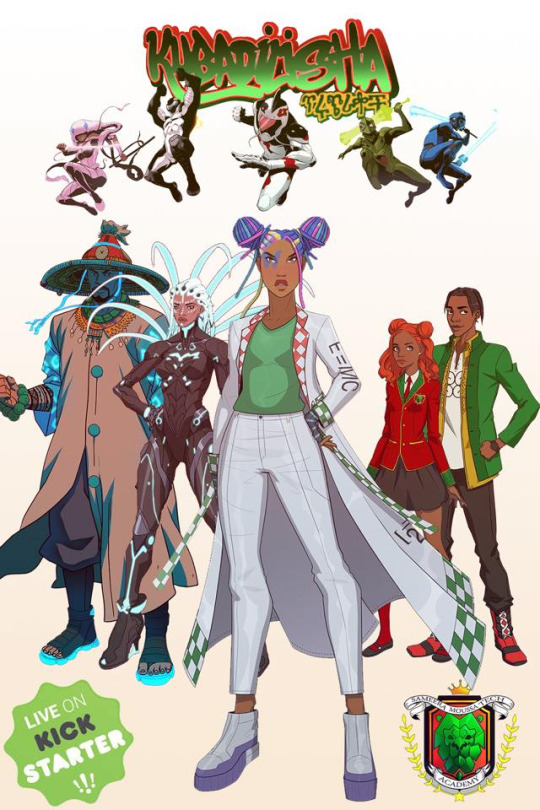



THE MAIN CHARACTERS

Akida is the leader of The School. He comes from a strong militant family so a leadership role is pretty much built into his DNA. He's the second oldest of The School members and is of Eritean descent. He is a skilled strategist and is able to think well under pressure. At times, Akida can be arrogant but still means well. His immaturity shows sometimes due to trust issues he has with his teammates during missions. The worse case scenario is always on his mind. This is why he has great prep time capabilities. He is gear head that loves fixing cars and small engines and taking his hoover bike on the country side for very high rides. He is the captain of his high school rugby team and is very popular and well liked with the majority of his peers and teachers. The monster, Koi, he transforms into can fly, has hydrokinetic abilities and his arms can morph into different types of cannons that shoot powerful water projectiles into any shape he can imagine (i.e. a large hammer, or sharp blade like weaponry). Koi is the only monster that uses water as a power beam.

Maisha is actually the brains and rebel of the group. She is half Japanese and half Afro-Guyanese. She is a lot more reserved than the others. Her punk / nerd girl personality are two polarizing identities she must balance. So, at times she can be insecure. She loves virtual gaming and learning. She is easily the smartest of all the youngsters. She is the medic for The School when injuries occur in combat. She's the top pupil in the Chess, Medical Science, and Mancala clubs. She is also on the varsity squad of her school's fencing team which is the only sport she loves. Maisha transforms into the monster Cnidaria. Cnidaria is a jellyfish and onna-bugeshia type of creature. She becomes completely poisonous and immune to all poisons. She has camouflage ability and can make herself blend with surroundings. This gives her great stealth ability. Cnidaria gives Maisha skills to master more weapons than any other member. She's the deadliest with any edge weapon.

Wasim is South African and the eldest of the group. He is known as the loner due to his neurodevelopment and skin disorders. He has high-functioning autism (HFA) and albino skin. He is the most skilled fighter of the Pneuma Children and has the most discipline. He follows directions very well and it is a must that he finishes all tasks before moving to the next. He is the one best trusted to do a solo mission as he's very precise. This reflects his dexterity in mathematics and symbolizes the absolution he demands in his life. He's good at puzzles and decoding as well. Wasim is often praised by his superiors. However, he does have difficult communicating, building an emotional connection, socially interacting, and even showing expressions to the other Pneuma Children. They all still do their best to make sure Wasim knows he's a big part of The School family. Wasim transforms in the monster Azuerus The Okopipi. It is the only non-sea creature of The School, resembling a frog. It has great leaping ability, agility, and is highly acrobatic. It can also cling to any surface, even sheer ice. It amplifies his great fighting ability, making him the most dangerous in hand-to-hand combat.
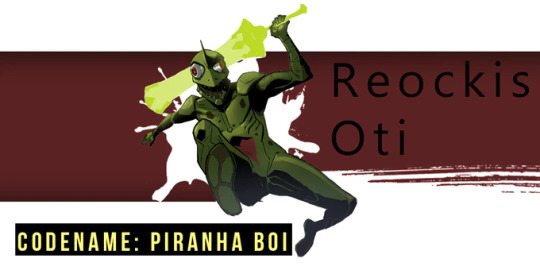
Reockis is the Nigerian wild child, loose cannon jokester. He is filled with high energy and can be a bit of a sadist due to the fact that he loves a good fight and is probably the bravest of them all. He often goes into danger head first. He's the youngest of the group so he's constantly trying to prove himself to the others. He's also the fastest member of the group. Reockis can be very immature at times and never misses the opportunity to play a practical joke. He enjoys the sport of cricket or any stick-and-ball type of sport, but his favorite is Dambe (Hausa Boxing). He loves embracing his Hausa tribal heritage and this is the reason he so proudly shows off his facial scarification. Reockis transforms into the monster they call Piranha Boi. This monster is filled with aggression and relentless bravery. His persona is much like the fish it resembles. If speed kills then Piranha Boi has it as he moves at mach speed. He has very quick reflexes and reacts to action much faster than anyone.
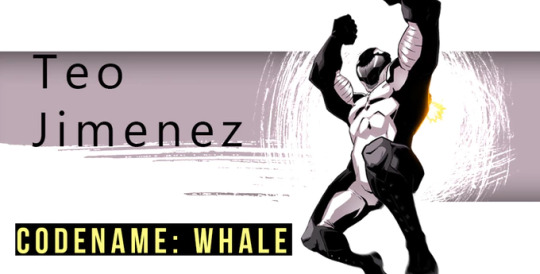
Teo is the friendly, humble Dominicano giant. He is one of few words. He spends his time painting and meditating. He is a very artistic illustrator and sculptor and even writes spoken word poetry. He loves exercising especially weightlifting. Teo is very tall and has a massive body frame for him to only be a teenager. This is due to his gigantism growth hormone which also effects his sight. Because of his nyctophobia (fear of going blind), he has severe anxiety attacks when his eyeglasses are removed. Teo is the youngest professional wrestler in the world and often takes on opponents twice his age. He is also skilled to build explosives and with EOD (Explosive Ordinance Disposal). The monster, Whale, that Teo transfoms into embraces his size. It attributes this to giving him such great strength. Despite the fact that he's a large person, he still moves swiftly. And he's so powerful that he's only armed with his fists that are equipped with claws.
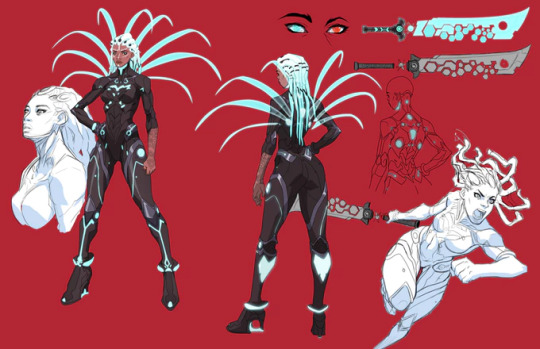
Turquoise is an android strictly created for battle. She was built to lack emotion and complete missions. She is a 'Mimeo' type of android. Mimeo androids are modeled after a person who once lived and become vessels for their conscience. However, their conscience is programed to take on the personality written by the coder. Turquoise is actually modeled after Karalexis's younger sister who died young in a freak accident. Since only five cell fusions were successful and Karalexis felt there was a need for a sixth member, Turquoise was created to assist The School members as trump card. Turquoise is cell fused with Illudium and each of the other School member's DNA. She's like a cousin to them all, but instead of being human, she's a cybernetic organic android. She is able to connect with each member on a telepathic level. Only Karalexis truly knows Turquoise 2.0's purpose and the extent of her powers. For now she is a misunderstood mystery to the Pneuma Children.
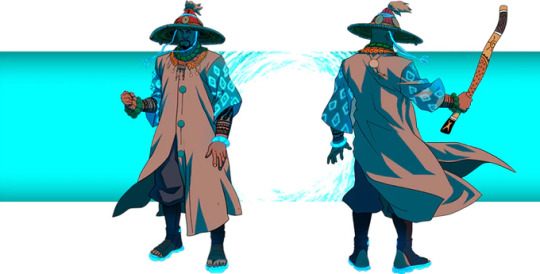
Grandmaster is the world's greatest human fighter. He is so powerful that his Qi delivers an aura that makes his clothing glow. He is called the ageless wonder because he is said to be over 300 years old. His youthful appearance comes from his Qi.
Although he was born in America, he is of Wodaabe descent. He is actually the last American-born man alive. In prior years, Grandmaster walked the Earth to find the world's greatest fighters and defeated everyone he ever faced. He then went into retirement to live in peace. Years later, Karalexis asks for his help with the 'Pneuma Seed' program. She wants him to train the members of The School to become stronger fighters than they could ever imagine so that when they transmogrify into Pneumas, their bodies become very durable and gifted with super abilities. Grandmaster agrees to assist. It has been many years since people, such as those comprising The School, have been able to withstand his attacks. So, when he trains with the youngsters, he's having the time of his life. His tutelage can sometimes be cruel but he knows what they can take so he often pushes them further than they believe are their limits.

The witty Sudanese mad scientist and the world's smartest person, Karalexis, is director and creator of the 'Pneuma Seed' program which spawn the heroic team known as The School. Karalexis is withholding a major secret from the entire world. The aliens she stole the Illudium from are coming for it. To top it off, the hostile aliens will more than likely not ask for the Illudium politely. These alien invaders are very powerful, like Gods. So, she created the bio-engineering conglomerate Ichor Corp to give the War Council of Aithiopia the illusion that it is to develop and research Illudium, create weapons and build a stronger, more advanced society for Aithiopia. While this is true, she never mentions that Earth and all humanity are in grave danger. Knowing the Earth would need to be prepared, she began the Pneumo Seed program with guidance and permission of the Ancestors. She created the process of fusing Illudium with a human embryo at conception.
Although their parents are involved in the The School's heroic program, Karalexis acts like a surrogate mother to all the members. She oversees their daily routines, training, and diet with the help of other trusted workers. Because she was the only survivor of fifty others during their mission, she has a whimsical and eccentric personality. She doesn't take anything in life too seriously and has a 'laugh now, cry later' type of attitude. The butterfly tattooed on her face symbolizes her new life. She is not the Karalexis she once was. When she returned to Earth she was reborn as the world's smartest person but went completely
Creators
Jahni Kwatrae (Writer)

An artistic indie filmmaker, writer, and comic book creator from Fort Wayne, IN. However, he's spent much of his life in the South, from Huntsville (AL) to Georgia and now residing in Nashville. He is also the creator and writer of the mature reader Grindhouse horror manga series, Giallo Gumbo. With your support, he and his team will be able to completely focus on creating the world of Kubadilisha.
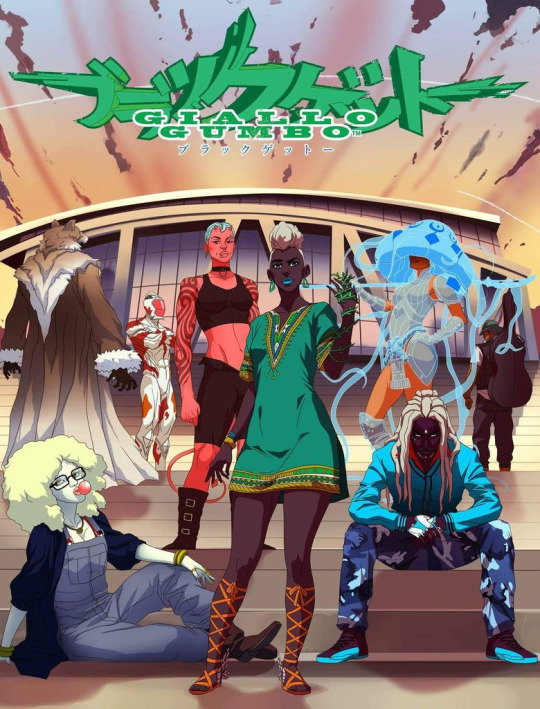
Courtland Ellis (Lead Panel Artist)

Courtland Ellis currently works as the production/ Lead Motion Graphic artist at Aspire Ventures, as well as being a freelance concept artist, comic artist and animator. His past works include Stabb Gunner and Harriet Tubman: Demon Slayer.
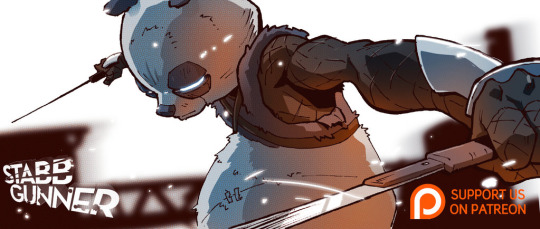
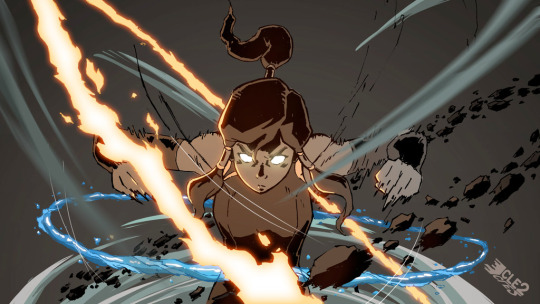

Welinthon Nommo, (Lead Character Designer/Concept Artist)

Born in Barahona, Dominican Republic. Graduated from the Art School of the Autonomous University of Santo Domingo (UASD). He is a very talented cartoonist, graphic designer, and illustrator. He has worked in many advertising agencies, publishing houses, and movies. He has also worked as Illustrator and colorist for Susaeta editorial and as an art director in the Izone-Education Project. Nommo has also done work on comic books, card games, and has been a character designer for various projects. This is the second project where he and Jahni have collaborated. The previous beingGiallo Gumbo.


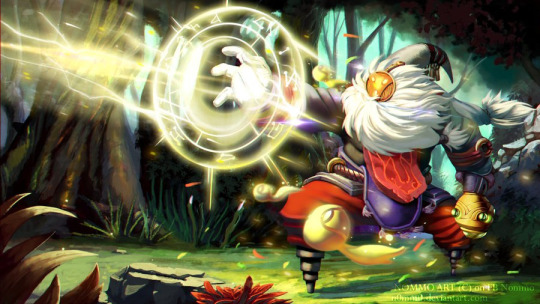
Venus Bambisa (Colorist/Character Designer)

Venus Bambisa is a concept artist and illustrator who has worked on comic book projects, children's book, book covers and animations. He is really interested in drawing characters with an Afropunk look and feel. He enjoys bringing ideas to life whether that be in the form of a character design or an illustration.
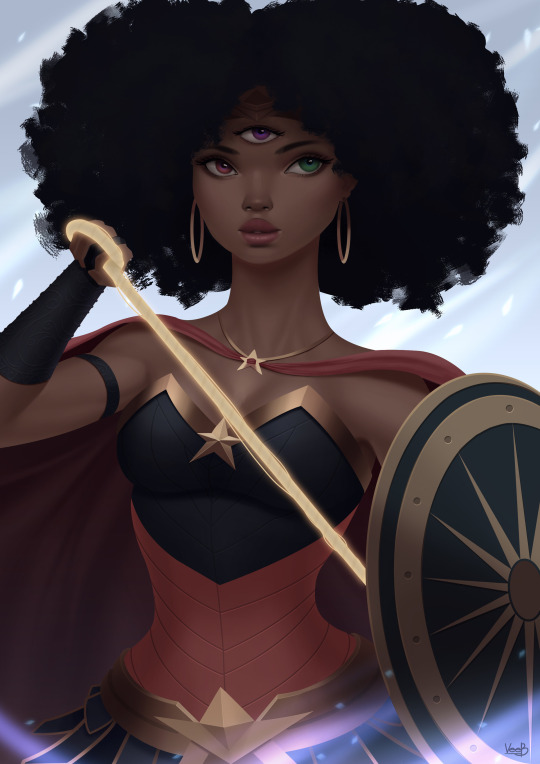

#kubadilisha#kickstarter#comic books#indie#independent#jahni kwatrae#courtland ellis#welinthon nommo#venus bambisa#comics#indy#independent comics#black power#Black Writers#black artist#blackcomix#blackcomicsmatter#reblog#spread the word#support black business#every bit helps#african american#African American artist#African American Superheroes#superhero#super powers
2 notes
·
View notes
Text
The Grudge (2020) Review:

YOU WILL HOLD A GRUDGE AFTER YOU WATCH 'THE GRUDGE' 😌
written by: Prancis
Am I the only one who thinks it's weird for a Horror movie being released during January? During New Year? Yeah, I'm gonna be talking about the new Grudge movie being released way back January 3rd. It's weird as hell.
When its first trailer dropped, it was actually engaging and it made me excited to watch it. Plus, Lin Shaye is in the movie so I was immediately sold. She's such a underated actress and she fits in almost any Horror movies. But then I asked, "What the hell is the point of rebooting a Japanese classic movie? Is the 2004 The Grudge not enough? Is the 2009 The Grudge not enough?" Well honestly, all of Hollywood's remake of The Grudge was trash. The 2004 one sucked tho but Kayako Saeki (the ghost) traumatized me when I was a kid and her roaring rattling noise is disturbing as f*ck! The 2009 one sucked harder. The original Grudge movie from Japan is definitely unbeatable and scarier.
This remake serves nothing special. Upon watching it, I kept the 'Meh' face throughout the film—It's really boring. The jump scares aren't that scary either and they're very predictable and silly. Watching 'The Grudge' is like watching a documentary about a detective trying to solve a murder case and nothing new.
The protagonist named Detective Muldoon, she's definitely a good actress. Her talent was wasted in this boring film and it sucks. In the film, she found herself getting involved in a murder case at Reyburn Drive where it boggles her of what provoked this case. Later on realizing that her case is not something ordinary as it involves supernatural occurrences which at first she didn't believe until she stepped on the house and started experiencing ghost occurrences.
The movie progressed as Detective Muldoon decodes the case—constantly having flashbacks of the murder event every other minutes—slowly introducing characters that are involved in the case which I think is a bit lazy and boring. The characters that are involved in the case aren't that engaging either, most especially the couple, Peter and Niña Spencer where they were having baby issues. Detective Wilson on the other hand, I don't know what the heck is his purpose in the film. Well basically he's the first detective that discovers the root of the murder case involving a ghost but then it drove him mad, he became crazy, then killed himself. So yeah, what's the point? Muldoon even had a chance to talk to him but she didn't get anything. Lastly the old couple, William and Faith Matheson. This time I felt like they're an interesting characters; one of the only characters essential for the film as well as Lorna Moody where her death drove Muldoon's curiosity to investigate the case.
The only scenes I loved about the film is when Faith and William's story are told. It's crazy and disturbing and ugh, Lin Shaye playing Faith Matheson is the only character that matters to me....she's done a great job once again.
Let's talk about that boring, predictable ending. I knew it was coming right from the moment Muldoon realized that ghosts are real. I knew she's gonna burn the house and assume the case will be solved. And yes, it happened. That's such a dumb decision. Is she really a trained Detective or something? Besides, nothing extremely terrifying even happened to her and her son yet so, what the heck drove her motivation to burn down the house? It is because she just saw some ghosts? Is that it? That's a lazy character development right there! And yeah, I also knew that Muldoon's gonna be killed by the ghost in the end. It's so predictable. 😪
Oh yeah, I forgot about the character who started these and brought a Japanese ghost to America—Fiona Landers. She was the one who came from the original haunted house from Japan and brought the curse or let's just say, 'The Ghost' to another place/house to infest. Basically her family's death caused the film's entire conflict. One thing I'm wanting to figure out about throughout the film is why the hell does stepping at someone's house causes the ghost to kill people? Is it a curse? Well obviously the grudge ghost is problematic af; She holds grudges to people who bothers her. Let me say this, Her soul needs to rest. 😂
The only good thing in this movie is how good the actors are. They've done a great job. It's pleasing visuals and good screen writing are good as well. And of course, Lin Shaye.
I would rate The Grudge 2 / 10 👎
That's not bad is it? Oh sorry, I'm just being honest.
Movie info:
Rating: R
Genre: Horror
Directed by: Nicholas Pesce
Release Date: January 3, 2020
Watch the trailer here!
youtube
0 notes
Text
SNU - Research:
I wanted to research more examples of live action and animated films that use nonverbal behaviour or communication to see how I can use body movement and language more effectively in my animated sequence.
youtube
bimdistruibuzione (2011) The Artist - clip - l'abbraccio. Available at: https://youtu.be/SmPt9il-Tdo (Accessed: 13 March 2020).
I watched The Artist (2011) to see how they use nonverbal communication in a modern film. The film is styled like a silent film, and I thought that this would be interesting to analyse as I have already looked at classic silent films, so I could compare their differences. Like classic silent films, the characters use their facial expressions and head movements to emphasise their emotion and behaviour. The lighting also reflects their mood as well, which communicates to the audience how the character feels through external sources to the character. The music also reflects the character’s emotions and emphasises this to the audience, such as when the female character holds the suit, and the music begins to enhance. As the male character enters the dressing room, the music enhances more, showing the audience that he was the one she was missing. In addition, as she is caught by him, the music becomes more intense, which complements her expression of embarrassment and grounds her back to the scene. Her hands also tighten on the suit as she realises she is being watched, symbolising her desire to stay in the moment, and possibly reflecting how she wishes to be closer to the male character.
Near the beginning of the clip, she walks into his dressing room, and the camera follows behind her, getting further from her the more she walks into the room. She rubs her hands together as she walks, which suggests that she is anxious about being caught in the room (which is reflected later when the male character finds her in the room). She is about to leave the room, but lingers, leaning her weight on the chair, and holding her arms close to her, suggesting her insecurity and nervousness about wanting to be with him and her reluctance to leave. The scene shows that body language can also communicate the relationship between other characters, which can also be emphasised further through cinematography, lighting, and music. In my animated sequence, I have considered using cinematography and lighting to enhance the scene. However, I think that if I added lighting, I would need to have an appropriate environment to reflect the lighting choice. As my animated sequence has no background or environment, I think that it would not be appropriate to add lighting in this case. I would like to experiment with lighting more in my Master’s Project film, as I intend to use different times of the day, so using lighting to emphasise this, as well as the atmosphere of the scene, will be important in communicating non-verbally to the audience.
youtube
Movieclips (2019) Bumblebee (2018) - Meeting Bumblebee Scene (3/10) | Movieclips. Available at: https://youtu.be/Ok3_qMNWAo0 (Accessed: 13 March 2020).
I also decided to analyse how animated characters in live action films communicate non-verbally to the audience. Although the actor does not see the animated character’s expressions, the animated character reacts to the actor, or ‘performs’ on their own when they are not being spoken to, which reveals their personality and behaviour through their movement and expression.
In this clip from Bumblebee (2018), Bumblebee has lost his voice, and tries to communicate to Charlie through nonverbal communication. He points to her to ask her name, and although Charlie tries to work out what he is trying to say, the audience can still understand the gestures and expressions he makes to her. In addition, Bumblebee uses his head to emphasise his fear, bringing his head and arms close to his body to suggest his nonthreatening nature towards Charlie. Bumblebee also uses his eyes to show his thought process, such as narrowing his eyes when Charlie misunderstands him. He also mouths some words, trying to speak, such as ‘you’ when pointing to Charlie, but these are extremely subtle, which allows his body language to communicate more strongly. He also has metal plates on his head that resemble ears, which move very similarly to an animal’s, which gives him an extra element to communicate with. His movements are slow and subtle when communicating, allowing the audience to study his expressions, mirroring Charlie trying to decode what he is saying. This suggests that in non-human characters, subtle movement can be used to communicate. Also, additional elements like movable ears can also be effective in communicating to the audience how the character feels.
Marcelo Zuniga (2015) Luke Confronts Darth Vader - Return of the Jedi [1080p HD]. Available at: https://youtu.be/en8bh60K7m8 (Accessed: 13 March 2020).
I also looked at a scene from Star Wars: Return of the Jedi to see how Darth Vader’s body language makes him an intimidating villain. Although his voice is extremely effective in communicating the villainous nature of the character, Darth Vader’s body language also reflects his emotions.
In this clip, Luke talks with Darth Vader, and tries to persuade him to return to his former self. Vader’s body language reflects his inner conflicts between the Dark Side and his son, such as when he lowers his head. When Luke mentions Vader’s true name, Vader stops at a 3/4 angle in front of Luke and points Luke’s lightsaber at him in a threatening manner, but the lightsaber is turned off, a clear indication that he does not want to hurt Luke. Vader’s movements are also restrictive, he keeps his arms by his sides and only moves his head on occasion, such as when reacting or thinking. He turns on Luke’s lightsaber slowly, pointing it at the side of Luke, blocking the way back to the elevator, symbolising that there is no going back the same way, which reflects Vader’s own experience. Vader is very reluctant in this scene,not making many sudden movements, which again reflects his inner conflict. Moreover, his lack of movement, in addition to his armour, reflects that of a bodyguard or soldier, which makes his reluctance to harm Luke more intense. When Vader recalls Obi-Wan, his past teacher, he turns his back to Luke and the audience, implying his regret, but also symbolising his recall of old memories by turning around. When Vader then talks about the Dark Side’s influence on him, he turns back to the audience and Luke, turning forward to the present time. In the end of the scene, Luke is taken to the Emperor, and Vader walks to the bridge where Luke was standing, and places a hand on the railing, suggesting that he is stabilising himself after the intense conversation with his son. The symbolism of Vader holding onto the railing also suggests that he is clinging to something, possibly Luke’s ability to overthrow the Empire and free him, or perhaps it could be his contemplation that he may have to kill Luke despite his clear desire not to. Either way, Vader’s body language in this scene shows the tension between himself and his son, which reveals his inner feelings through body language and tone of voice alone. As Vader wears a mask, he cannot use his facial features to communicate to other characters or the audience, so these body gestures and movements are crucial to understanding the character’s power and emotional state.
Disney Clips (2008) WALL·E - First Date. Available at: https://youtu.be/13BKk6sCM2w (Accessed: 14 March 2020).
I analysed a scene from Wall-E to see how animated characters with less facial features express emotion through their body language. Wall-E does not talk, but he makes exclamations and robotic sounds that reflect sounds of human emotions. The human-like qualities in Wall-E make it easier for the audience to emphathise with him, but it also helps the audience to understand him through his nonverbal communication. Wall-E uses his eyes to communicate his thoughts and emotions, tilting them closer together when confused, and bringing them wider apart when he is surprised. He also has limited movement due to the nature of his robot body, however he has flexible hands and wheel tracks that act as his feet. These seem to be very durable and have a wide area of rotation, which allows him to use them similarly to human hands and feet.
Wall-E’s expression comes from his human-like characteristics, such as empathy, which robots are often depicted without. In the scene, Wall-E tries to wake up EVE, experimenting with different methods, such as charging her using solar energy from the sun. He also shows his more human nature, such as when it rains, he holds up an umbrella over EVE to protect her. He also tries to hold her hand, indicating the romantic feelings he has for her. These human emotions allow the audience to emphathise with Wall-E, as we recognise the behaviours from our own experiences. In my animated sequence, I should consider giving the character some human qualities, even if they do not effect the narrative, as this may influence the amount of empathy the audience has with the character. This would strengthen my sequence, but would also help me to make my character’s performance more unique and endearing.
youtube
IGN (2019) The Mandalorian (2019) Official Clip. Available at: https://www.youtube.com/watch?v=yXRpWNIvNxM (Accessed: 14th March 2020)
Like Darth Vader, The Mandalorian wears a mask, which makes it difficult to know what his true feelings are. It also restricts the audience from seeing his facial expressions, which means we have to rely on his voice and body gestures to understand his character. In this scene, The Mandalorian says very little, choosing to stay quiet for most of the scene. Upon seeing a potential enemy, he points his gun at him, which shows his hostility and suggests that he is a powerful character. He points another weapon at the Storm Troopers to show that he is not defenseless to them, and his ability to wield more than one weapon at a time suggests that he is a skilled fighter. The character’s tone of voice is very leveled, there is no variation in his voice, which makes him sound confident in the situation. This suggests that a character’s tone of voice, as well as how they act towards other characters can unconsciously reveal their personality to the audience.
SNU – Research:
After researching how ballet uses movement to convey body language through their character to music, I wanted to analyse theatre performance as a contrast to acting in film, as a scene in a film may have been re-shot several times, whereas in theatre the actors can only perform the scene once.
youtube
The Phantom of the Opera (2013) The Phantom of the Opera - London EPK | The Phantom of the Opera. Available at: https://youtu.be/wNWUdSxxnHM (Accessed: 14th March 2020)
I decided to analyse the body language and behaviour from the characters Christine and The Phantom from The Phantom of the Opera. I went to see the theatre production last year, and remember the body movements of both characters being distinctly different to reflect their different personalities. Christine’s movements are floaty and airy to reflect her beauty and innocence. She also uses her head often in her movement, sometimes entirely with little movement from the rest of her body, especially during scenes with The Phantom. The lack of movement in these scenes, despite her relaxed, loose poses reflect a puppet being moved, a nonverbal visual clue to the audience that she is disillusioned by The Phantom.
The Phantom’s movements have more power and he stretches his arms out more, which emphasises his intimidating nature. Along with his cape, his more outward poses gives him a larger figure and makes him look more menacing, similar to Dracula or the image of a large bird of prey. Part of his face is covered, which is symbolic of him hiding his true nature, but it also makes it difficult to see his facial expressions, especially when the masked part of his face is facing the audience. This intentionally gives the audience an air of confusion and mystery, as we are unsure what The Phantom is truly feeling, as we can only see his body language, and hear his voice and its tone, which from my research on body language, can be manipulated to a degree which makes it difficult to know the character’s true feelings. Whilst body language can be managed, it is not possible to fully control all unconscious reactions as behaviour and emotion will effect this, which is shown through The Phantom’s power in his movement, which is often strong and restrictive due to his desire to be with Christine and make her perform his play, in contrast to Christine’s slower, floaty, free movements. This suggests that emotion can effect a character’s kinesics in theatre performance, which can be important to communicate to the audience. When animating my sequence, I should consider how the character’s behaviour will affect the movement they make, and how their personality will also make this distinct to another person’s movements. Whilst my sequence will focus little on the character’s personality, having a short description or backstory about the character will enhance my sequence, and will give the character a purpose for performing that way in the scene.
0 notes
Text
Panasonic Tc-p58s2 58-Inch 1080P Plasma Hdtv
kodi box cost amazon fire tv kodi amazon fire tv kodi When I am living in a comfortable life, I often think of my parents. They stay far away from us and cannot experience our love and care. When we were young, they did everything for us and now it is time for us to do something useful in return. If they are in fashion and they want to begin their second work after they retire, you can send them a magnetic card reader. A helpful tool for them to do business will be better than a hired staff. Sometimes if we directly give money to our parents, they would be disappointed and unhappy. They don't want to be old and are not willing to accept the truth that they turn old. The frequency of transmission is also an important consideration when purchasing a wireless video transmitter. Many of these units operate in the 2.4 GHz band. The trouble is that this greatly increases the likelihood of interference with other household devices. Microwave ovens, wi fi networks and many cordless phones operate in and around the neighborhood of 2.4 GHz. It is quite common that switching on and using one of these devices will interfere with the operation of the others. Many devices have the ability to select channels for use and this can mitigate the interference problem somewhat. You can watch your entire iTunes video collection right on your television set with the AppleTV. The possibilities are unlimited -- enjoy movies, music, TV shows, podcasts and more with just the click of a remote. You can even transfer photos from iPhoto or Photoshop right to your television screen for a fun and high-tech photograph slideshow. LAMP - when it comes to 'cost of ownership', we must factor in the DLP's lamp. The Mitsubishi manual expects its lamp to last for about one year but our Samsung was still okay after 2 years with the original lamp so, we shall see. A replacement for this model, direct from Mitsubishi is $99 and I will get a free one under warranty if the original needs replacement before one year. Given the great energy savings when compared to an LCD TV, I am not too worried about having to replace the lamp from time to time. kodi box at best buy You should also buy a cabinet that allows room for air flow around your components. Don't try to pack everything as tight as possible and never stack components that get hot. Restricting the air flow means your components may overheat and turn themselves off unexpectedly. It also shortens their life. In extreme cases there may even be a danger of catching fire although that is far from normal. My favorite aspect of the DishDVR is being able to pause or rewind live TV. If the phone rings or if I need to use the bathroom, I simply press pause on the remote control and the picture freezes. A few minutes later, I come back to the TV and pick up where I left off without missing a thing. The Best And most Terrible Google Product Innovations Of Last Year is great for sporting events or TV shows. I also love being able to record TV shows and then watch them later so that I can skip past the commercials. There is a skip button on the remote control that allows you to skip ahead 30 seconds. Give Up Tv And Gain Yourself of time for most commercials. Also, you can skip back 10 seconds if you missed a play or didn't hear some dialogue. It is very cool. The DishDVR is like a combination of a cable kodi box, VCR, and DVD player all rolled into one. I have one DishDVR that contains two digital video recorders inside it and is linked to two televisions. So I can watch TV in one room and record a different show in the other room. Or, I can record two shows at the same time if I'm not at home. It has the capacity to store 100 hours of programming, which is the equivalent of nearly seventeen of my old six hour VHS tapes. Since the DishDVR records directly to a hard drive, I never have to insert a DVD or video tape to replay a movie or a TV show. And with 100 hours of programming capacity, I never run out of storage space. The interactive program guide is awesome. With your remote control and on screen program guide, you can check TV and movie listings for tonight, tomorrow, or even a week from now. You can even search the entire guide to look for a specific show or movie by title. Once you find your show, simply press select and it is set up to be recorded. If there is a show that comes on every week, you can select "record weekly" and it will tape it every week. There is no need to program it every single time the show airs. This is a great feature for when you are going on vacation. When you get back home, all of your favorite TV shows and movies are waiting for you to watch at your leisure. It supports all the major digital TV receiving signals such as ATSC, DVB-T, ISDB-T, D-TMB, DVB-S, DVB-S2 and DVB-T2. It also supports 1080P video decoding and full digital hi-def multimedia output. Some of its features include: online gaming, video sharing and downloading, photo sharing and downloading and music sharing and downloading. It even supports the HDMI 1.3 digital audio/video interface and lets you download and install 3rd party apps and not just the ones offered in the Google Play Store. As it is very cold in Christmas and there is snow in some places, you can consider buying them some warm clothes and boots. Maybe they are about to order some. If your parents have prepared warm clothes before winter arrives, you can send some useful gifts to them such as wifi blu ray player. Owning such a nice home electronic product, they would never need to go to the cinema to see a film. Or you install a WIFI IP camera around their house so that it will monitor everything and everyone in the home. Some thieves like to enter people's house to steal other's property. It is necessary for you to take some measures before the event happens to you.
0 notes